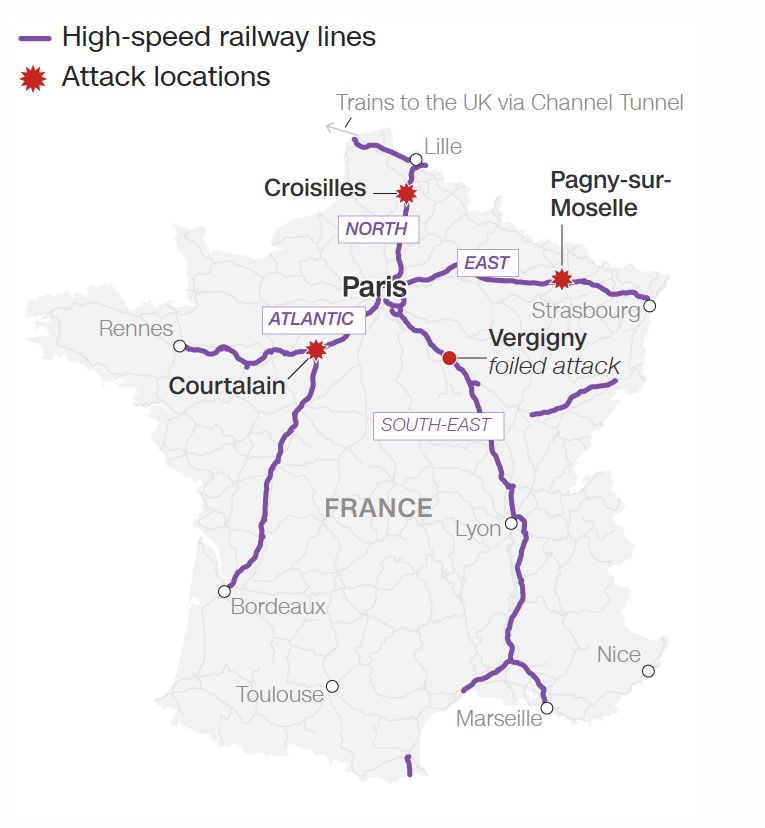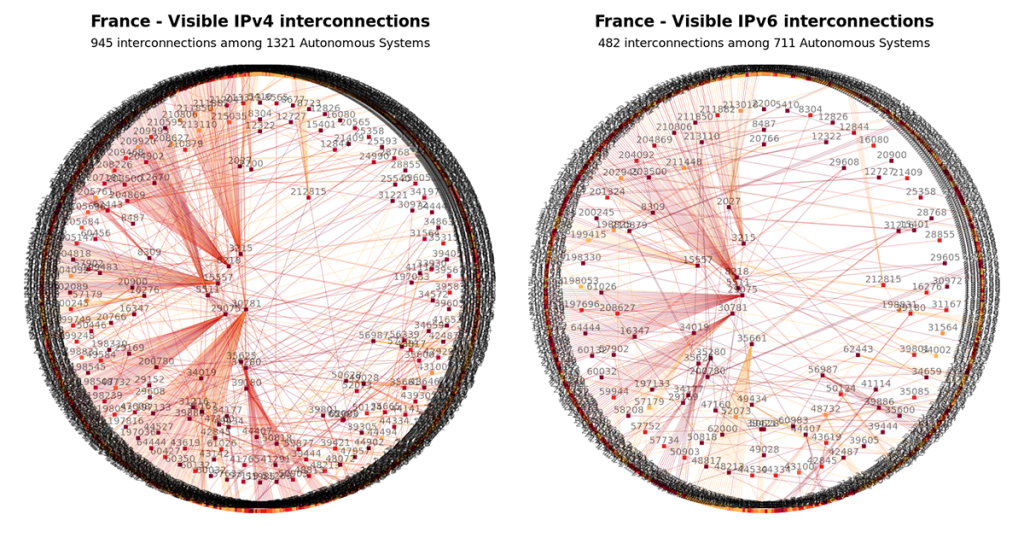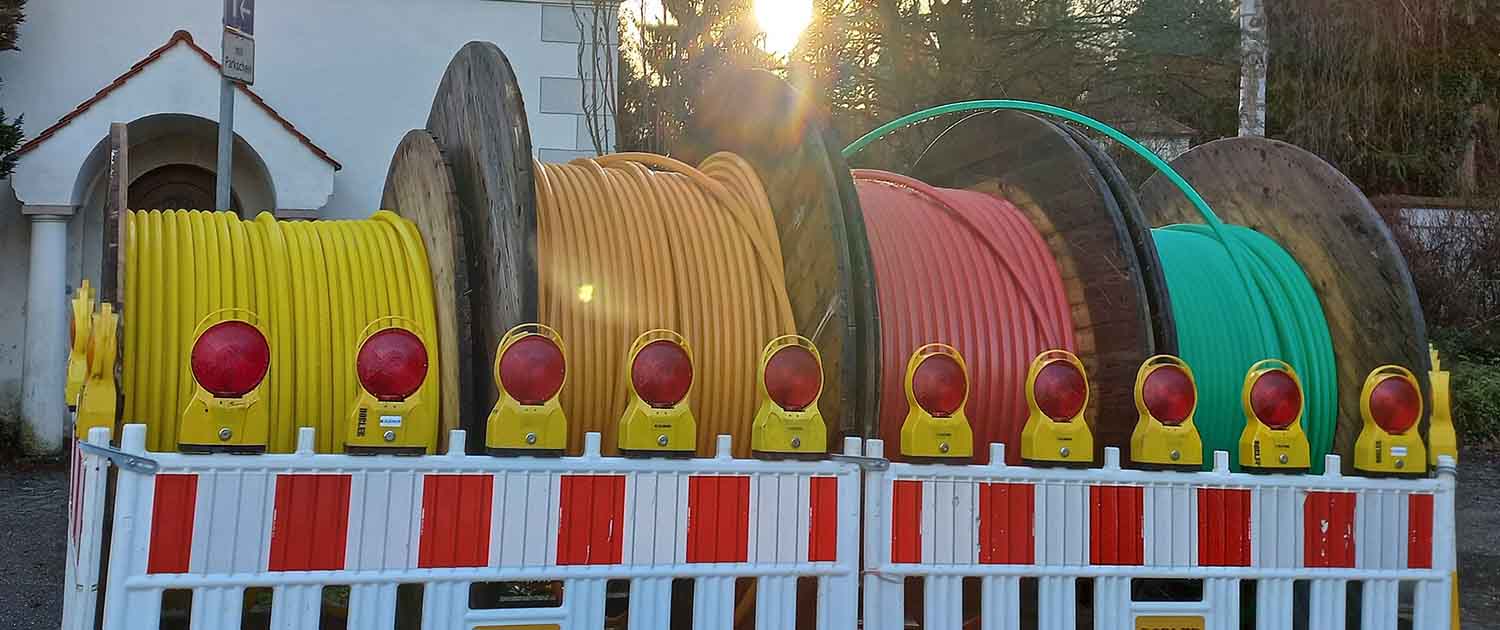According to news reports, several acts of vandalism cut communications cables in different areas of France in the early hours of Monday, 29 July. These acts occurred just a few days after a wave of arson attacks targeted the French high-speed rail system just as the Paris Olympics games got underway.
However, while last week’s rail sabotage led to significant delays and cancellations, the Internet in France didn’t reach a standstill last night.
Internet measurement services show a very insignificant drop in traffic (if they show any). If saboteurs tried to use the same techniques from the railway sabotage to take down or even just majorly disrupt the Internet last night in France, they ultimately failed. They failed because the Internet and the French railway system are, at their core, two very different types of networks.
Circuit Switching: The French High-Speed Rail System
The French high-speed rail system, the TGV, is an example of a circuit-switching system. To take a train from Paris to Bordeaux, you first need a dedicated train track (or a “circuit”) to catch a train and take it to Bordeaux. There are only a few high-speed train tracks between Paris and Bordeaux, so you can only run so many trains simultaneously. There are only so many sidings on a track to allow passing. But crucially, high-speed trains cannot travel at the same speeds on tracks that aren’t built for high-speed trains, nor can they travel on roads.
The TGV, like many other circuit-switching networks, is built in a hub-and-spoke network model. The central train station in Paris (the hub) allows riders to easily switch trains to take the train lines from the hub to their destinations (the spokes). While this is convenient, the hub becomes a single point of failure for a hub-and-spoke system.
As a single point of failure, hubs become targets for attackers. The map below shows that last week’s sabotage occurred on the main train lines close to Paris. In doing so, the attackers were able to cause significant disruption.

Packet Switching: The Internet
The Internet was designed using a packet-switching model rather than a circuit-switching model, which inevitably leads to the weaknesses of a hub-and-spoke model.
In this model, Internet data is broken up and bundled into tiny packets, which are then sent across the Internet to their destination. Unlike a train on a train track, packets do not need to take the same path across the Internet to their destination. Instead, they are passed across a network of interconnected networks until they finally reach their destination. If a network is offline, the packet will take a different path through the Internet until it reaches its destination. At a design level, this high level of adaptability creates resiliency to localized problems on the Internet.
In a country like France, a strongly developed Internet infrastructure enables the benefits of the Internet’s design to be realized. There are nearly two thousand individual Internet networks in France. Each of these is connected to a set of other French of foreign networks to form a part of the global network of networks. With this mesh of connections, the French Internet benefits from high redundancy. Packets can take different routes to reach their destinations and can navigate around when there are localized disruptions (which happen fairly often).

When saboteurs reportedly cut Internet cables in several locations in France last night, it wasn’t like cutting vital train lines, leaving trains with nowhere else to go. Networks routed packets around the cable cuts, and France’s Internet continued functioning well. A resilient Internet is designed with localized disruptions in mind.
Lessons for Policymakers
The Internet’s packet-switching model enables incredible resiliency for the Internet. However, a country must have the infrastructure and Internet ecosystem to enjoy its full benefits. While France benefited from network diversity and a dense, resilient infrastructure, some other countries don’t.
In some countries, the Internet infrastructure is centralized into a hub-and-spoke model or dominated by a single network operator. When a country’s Internet looks more like the French high-speed rail network and less like the French Internet, it loses the resilience that the Internet’s packet-switching model provides. Instead, it finds itself more susceptible to threats like cable cuts that could disrupt or badly damage the Internet.
Policymakers worldwide should ask, “How resilient is my country’s Internet, and what can I do to help?”
Read more about why Internet resiliency matters and what you can do today to help the Internet thrive.
Photo by Asurnipal, Wikimedia Commons


